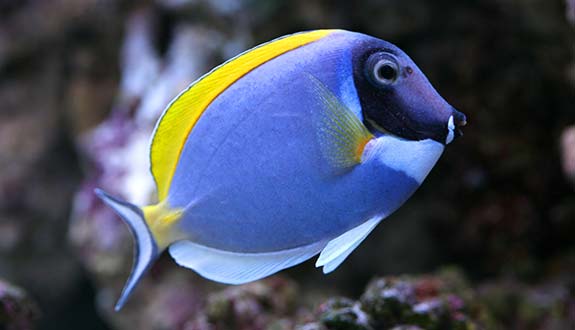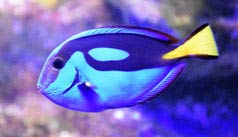

Alternative species (click on the thumbnail to see the card)
Names
Scientific name
Acanthurus leucosternon
Acanthurus delisiani
Acanthurus delisianus
Hepatus leucosternon
Rhombotides leucoternon
Common name
Powder blue tang
Powder-blue surgeonfish
Origin

Origin: Red Sea, Indian Ocean
Natural habitat: it lives in the clear eautx of coral reefs, up to 25 m (82 feet) deep.
Dimorphism

Females are larger than males.
Group
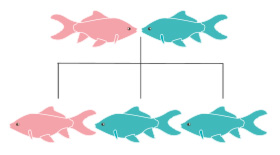
Acanthuridae
Volume

1000 L /220 Imp gal / 265 US Gal
Parameters

T°: 24 to 27°C or 75 to 81°F
pH: 7.8 to 8.5
Density: 1021 to 1026
Difficulty

Hard
Size

20 to 30cm (7.9 to 11.8")
Longevity

12 to 20 years
Living zone
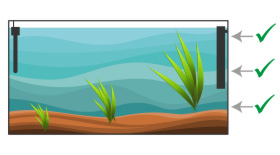
Everywhere
Individuals
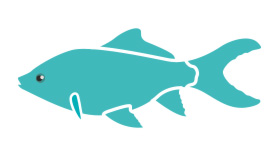
1
Food
How to feed the Powder blue tang?
Food
How to feed the Powder blue tang?
Alguivorous, this fish particularly appreciates young seaweed. Given its lively temperament, it spends a lot of energy and has a rather massive physique. This is why it has a very good appetite. Even if it eats everything, its diet will be mainly vegetable (95%) with meat food as a supplement. If the protein content is too high, his digestive system could be damaged over time.
You can offer him: fresh or freeze-dried seaweed, peas, broccoli, salad and poached spinach... They can also accept dry spirulina-based food or pellets for herbivorous fish after a period of adaptation. For meat foods: artemia, tubifex, chironomid larvae, shrimp, mussel, fish meat...
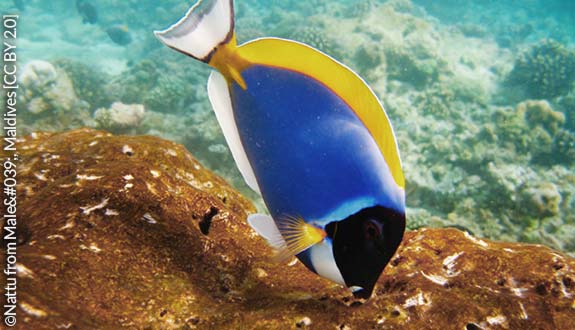
Adjust the amount of food according to the algae available in the aquarium. If there is none (which is otherwise detrimental to the natural behaviour of this fish), you will have to distribute the meals at least 3 times a day. In general, it is best to offer several small meals per day as this is more in line with the biological rhythm of the fish.
It should be noted that it eats slowly and only small foods.
Behavior
What kind of behavior does the Powder blue tang have?
Behavior
What kind of behavior does the Powder blue tang have?
Provided that he is maintained in good conditions and in an aquarium offering sufficient space, this great surgeon is generally peaceful (except towards his fellow surgeons, cf "cohabitation"). Otherwise, he can become extremely aggressive and territorial. Likewise, lack of food or too much competition for food makes him or her grumpy.
It spends most of its time grazing on algae and swimming along the walls. It is very lively and very active.
Cohabitation
Who can live with the Powder blue tang?
Cohabitation
Who can live with the Powder blue tang?
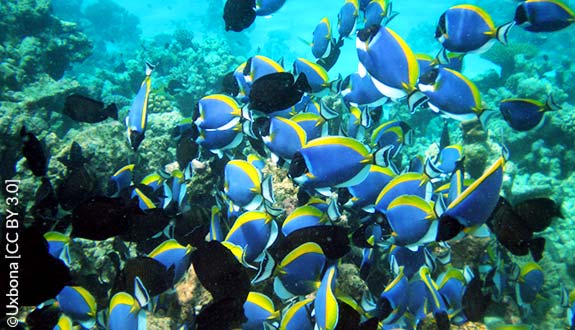
Surprisingly, in the wild the Acanthurus leucosternon is a schoal fish that is found in dozens of specimens. However, in captivity, it does not tolerate the presence of its congeners or any other member of its family gathering it in shape or colour. For example, you will never associate Paracanthurus hepatus, Acanthurus achilles, Acanthurus nigricans or Acanthurus japonicus with it. This kind of cohabitation is only possible in aquariums of at least 5000 litres / 1100 Imp Gal / 1320 US Gal)! In most cases, it is absolutely forbidden!
As for its relations with other species of fish, they are rather good except for a few situations. We have already mentioned the impossibility of cohabitation with other surgeon fish of the same shape and colour. Add to this an intolerance towards newcomers in its aquarium. Also to avoid very territorial species with whom fights can become muscular. Finally, aquarists have reported that sometimes the fish will have an unexplained and isolated "crisis" in which its strong character can wreak havoc.
Choose roommates that are non-territorial and will not be disturbed by the agitation of the White-breasted Surgeon.
He likes to be cleaned by the wrasse (Labroides dimidiatus) or Ambrosian shrimp (Lysmata Amboinensis). This type of cohabitation is recommended and helps in the acclimatization of fish in captivity.
Breeding
How to breed the Powder blue tang?
Breeding
How to breed the Powder blue tang?
Unknown in captivity.
Its aquarium
Which aquarium for the Powder blue tang?
Its aquarium
Which aquarium for the Powder blue tang?
Even if it is not extremely big, this fish is lively and likes to swim with sometimes peaks of speed! That's why it will need a minimum of 1000 litres (220 Imp gal / 265 US Gal) to satisfy its need for space.
It will find its place in a balanced and mature reef system. The decor will be composed of rocks, algae and corals. Form reef pillars with your rocks so that the fish can go around them. The presence of hiding places and holes is also recommended.
To encourage the growth of the algae it feeds on, choose powerful lighting.
The water in your aquarium should be rich in oxygen. For this, a good stirring is mandatory.
It is somewhat sensitive to variations in water parameters and should be as stable as possible.
Good To know
Find all additional information!
Good To know
Find all additional information!
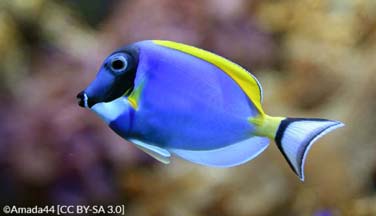
Even if the average height is around 20 to 30 cm (8 to 12"), some records have been reported at 54 cm (21")!
This fish is difficult to acclimatize. It is very sensitive to stress and susceptible to diseases, especially skin diseases (Cryptocaryon irritans or white spots in particular), which is why it should be reserved for experienced aquarists. Moreover, the treatment of whiteheads with copper sulphate cannot be used in reef aquariums (toxic to corals). It is therefore necessary to use an ultraviolet solution, without any guarantee of results. In any case, remember that good maintenance conditions, stable parameters and the avoidance of stress naturally keeps disease away!
At the base of his caudal peduncle, the White Breast Surgeon has a pair of sharp blades (located on each side of the tail). These are weapons mostly used during confrontations between males but can also be used to defend themselves against aggressors. It is because of these blades, similar to scalpels, that he owes his name "surgeon".
The intensity of his coloration is a good indicator of his health and emotional state!
They can hybridize with Acanthurus achilles, Acanthurusjaponicus and Acanthurus nigricans.
Yours photos!

By Encyclo-Caro

By Encyclo-Caro

By Encyclo-Caro
Comments
Sort by:
Please login to post comments
